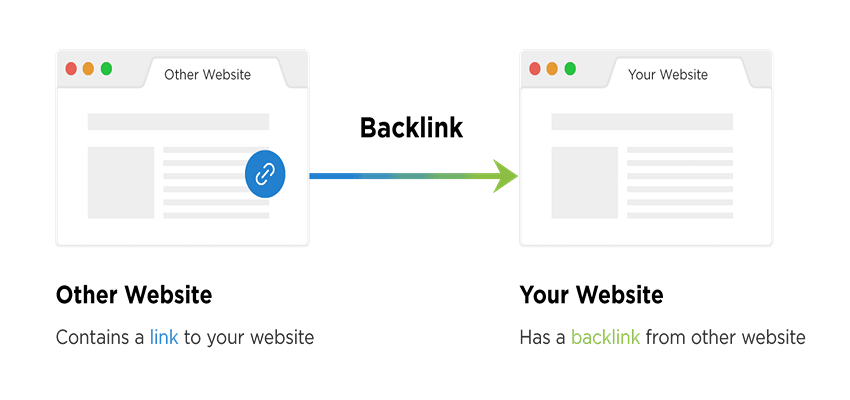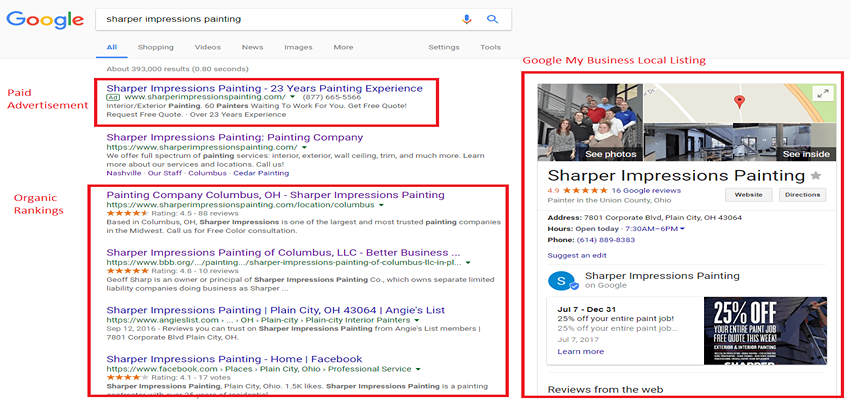
Written by Venturz Editorial Team, Marekting Experts
Category: Marketing and sales

Are you looking to create an SEO roadmap strategy that'll knock the socks off Google in 2025?
Well, you're in luck!
To create an exceptional SEO campaign strategy, you need to focus on three main things:
- High-quality content, and backlinks from reputable sources.
- A website that's optimized for both mobile and page speed.
- Keep your ear to the ground for the latest algorithm updates and industry trends.

Also, don't be afraid to peek at what your competitors are doing. And don't forget the small stuff!
Optimize your title tags, meta descriptions, and header tags. Plus, ensure your website is properly indexed by Google and other search engines.
Sounds easy, right?
Well, we disagree!
Creating an organic SEO strategy for a new website is not an easy game. Choosing suitable best seo strategies for new websites is a very critical step, that is why we have decided to guide you through every step involved in creating advanced SEO strategy plan that wins.

First things first: Let's define what is an SEO strategy?
An effective SEO strategy (Search Engine Optimization) is a set of techniques and tactics used to improve the visibility and ranking of a website in organic search, effectively capturing the SEO strategy meaning in its application.
This approach is pivotal in enhancing how your site appears on search engine results pages.
And the goal?
The goal is to increase the quantity and quality of organic search traffic by making it more likely to appear at the top of search engine results for relevant keywords and phrases.
This is achieved by using various search engine strategy elements, including content, technical structure, and inbound links, as well as analyzing and understanding the behavior of search engine algorithms and user intent, serving as a solid website strategy example.
This comprehensive approach ensures your site is fully optimized to meet both search engine criteria and user expectations.
Having an effective SEO website strategy can lead to increased brand awareness, more leads and sales, and a higher return on investment for businesses.
Basic SEO strategy examples can be used to achieve On-page, Off-page, Technical, Local, E-commerce, Voice, Video, and Image SEO goals. These strategies are going to tell you how to build an SEO strategy?
.

Let's dive into the detail of how to create an SEO strategy?
On-page SEO involves optimizing the content and structure of a website to make it more appealing to both search engines and users. This includes multiple SEO content strategies like optimizing title tags, meta descriptions, which are the snippets of text that appear in search ranking, along with header tags, keyword density, and internal linking. Using a blog as part of your SEO plan is essential to this process, ensuring that website's content is relevant, well-written, and easy to navigate so, its important to have blog SEO strategy.
The goal of on-page SEO is to ensure that the website's content is relevant, well-written, and easy to navigate.
Off-page SEO is an important part of a winning SEO strategy. It involves building backlinks to a website from other reputable sites.
Backlinks are important for SEO because they signal to search engines that other websites consider your content as valuable and trustworthy. Link building can be carried out through various methods, such as guest blogging, social media marketing, and link exchange programs, which action describes a strategy of search engine optimization. This method reinforces your site’s credibility and authority, key factors in search ranking.
This is an important part of a solid SEO and content strategy. Technical SEO involves optimizing a website's technical aspects to ensure it is easily crawlable and indexed by search engines.
This includes conducting a technical SEO audit, optimizing the website's code, ensuring effective use of mobile SEO strategy and increasing the website's loading speed.
Technical SEO also ensures the website's structure is easy to navigate and free of any technical errors that might prevent search engines from crawling or indexing it.
Local SEO is crucial for businesses with a physical presence, like stores or restaurants, aiming to increase organic traffic within a specific geographic area. Integrating local SERP tracking strategy can enhance this effort, providing valuable insights into how well their content optimization strategies are performing against local competitors.
This approach not only helps in fine-tuning their SEO tactics but also in maintaining a dominant online presence in their designated market.
E-commerce SEO is an advanced SEO strategy example that focuses on optimizing e-commerce websites for search engines to drive more sales and revenue. This involves optimizing product pages, creating unique and informative product descriptions, and building backlinks from reputable sites.
SEO branding strategy also involves understanding how search engines rank e-commerce websites and making sure that the website's structure and navigation are optimized for both search engines and users.
It is a type of SEO that focuses on optimizing a website for voice search queries. With the rise of smart speakers and virtual assistants, more and more people are using voice search to find what they're looking for online.
Optimizing a website for voice search involves creating content for a new website SEO strategy that answers common voice search queries and using structured data to make it easier for search engines to understand and interpret the content on a website, crucial for building an SEO strategy. This approach enhances how well your site communicates with search engines, boosting its visibility and user engagement.
Video SEO focuses on optimizing video content for search engines. This includes video titles and descriptions, adding closed captions and transcripts, and building internal links to video content.
Video SEO also involves understanding how search engines rank video content and ensuring it is easily discoverable and shareable.
Image SEO focuses on optimizing images on a website to increase visibility on image search engines like Google Images. This involves image file names and alt tags and ensuring that images are properly compressed and load quickly.
Image SEO also involves understanding how search engines rank images and making sure that images are easily discoverable and shareable.
It's worth noting that different types of basic SEO strategies and techniques can be combined to achieve the best results. For example, an e-commerce website might use a combination of on-page SEO, off-page SEO, and technical SEO, illustrating effective web strategy examples. This integrated approach optimizes various facets of the site, enhancing overall performance and visibility.
Choosing right search engine optimization strategies for your business can be challenging, but it's essential for achieving your online goals.

Here are a few tips to help you choose the best SEO strategy for your business:
Understanding your target audience is crucial for choosing an effective SEO strategy. Understand your audience and identify the most relevant keywords and phrases they are searching for and tailor your content and website to meet their needs, highlighting the importance of content in SEO. This approach ensures that your SEO efforts are not only targeted but also highly effective in attracting and engaging your intended audience
This will help you target the right people, with the right message, at the right time.
Analyzing your competition is the second most important aspect of an SEO Strategy planning checklist. It can give you valuable insights into what works in your industry and what doesn't. By analyzing your competition's strategies, you can identify what they are doing well for SEO success.
This can help you develop a winning overall strategy that sets you apart and achieves your online goals.
Your business goals should be a major factor in choosing a strategy for SEO. For example, an e-commerce SEO strategy may be best for your business if your goal is to increase online sales. Or, if your goal is to generate more leads, a local SEO strategy may be more appropriate.
By aligning your SEO strategy development plan with your business goals, you can ensure that you are working towards achieving your desired outcome.
Be realistic about your budget, resources, and time frame when choosing an SEO strategy. Some strategies require more time, resources, and budget than others. It's important to choose a strategy that fits within your constraints and that you can realistically implement.
SEO is a constantly evolving field, so it's important to stay updated with the latest trends and algorithm updates, especially google algorithm. This will help you stay ahead of the curve and ensure your strategy is effective in the long run.
Keep track of your progress, measure your results, and adjust your strategy accordingly. Regularly monitoring your progress can identify what is working and make necessary adjustments.
SEO can be a complex field, and it can be difficult to know where to start. If you are unfamiliar with SEO, it's best to consult an SEO expert or consider professional SEO services that can guide you through the process and help you choose best content SEO strategies for your business.
They can help you identify your target audience, analyze your competition, and develop a strategy that fits your goals and budget.
Technical SEO is an important aspect of content and SEO strategy that helps to make your website easily crawlable through different search engine strategies. Having a sound website can help you rank better in search engines. It's also important to ensure that your website is mobile-friendly, has a fast loading speed, and that its structure is easy to navigate.
Developing an effective website content strategy involves a combination of different tactics and techniques designed to improve a website's visibility and ranking on search engines.
Here are some steps you can take to create a successful SEO strategy for website:
Creating an exceptional SEO content development strategy involves setting specific goals and key performance indicators (KPIs) to measure your progress and success.

Here are some steps to follow when setting your goals and creating a content strategy for SEO:
- Identify your business goals: Determine your business goals and how they align with your overall marketing strategy. For example, your goals might be to increase website traffic, generate more leads, or boost online sales. To achieve those goals, having an effective search engine optimization strategy is crucial.
- Define your target audience: Understand your target audience and their needs. This will help you identify the most relevant keywords and phrases to target.
- Set specific and measurable goals: Your goals should be specific and measurable. For example, instead of setting a goal to "increase website traffic," set a goal to "increase website traffic by 25% in the next quarter." An SEO marketing strategy is going to help you in reaching the desired traffic on your website.
- Set relevant KPIs: Identify the KPIs that will help you measure your progress toward your goals. For example, if your goal is to increase website traffic, your KPI might be website visitors or page views.
- Create a timeline: Create a timeline for achieving your goals. This will help you stay on track and ensure that you are making progress.
- Regularly monitor and track your progress: Regularly monitor and track your progress using your KPIs. This will help you identify any areas needing improvement and make adjustments.
- Analyze your progress: Analyze your progress and use the insights gained to adjust your strategy.
Conducting keyword research is a crucial step in creating top-quality content SEO strategy. A good keyword ranking strategy helps you identify the keywords and phrases relevant to your business and your target audience is searching for.

When you're researching for your keyword SEO strategy, it's crucial to follow a structured approach that ensures your content is optimized effectively.
Here's a breakdown of the steps you can take:
- Identify your target audience: Understand your target audience and their needs. This will help you identify the most relevant SEO content keywords and phrases to target.
- Use keyword research tools: Use SEO tools like Google Keyword Planner, Ahrefs Keywords Explorer, or SEMrush to help you with your keyword research. These tools can provide data on search volume, competition, related keyword ideas, and the potential traffic a keyword can generate.
- Analyze the competition: Look at your competitors' web pages and analyze the keywords they are targeting. This will give you an idea of what keywords work in your industry and what you can do to stand out.
- Identify long-tail keywords: Long-tail keywords are longer, more specific phrases that are less competitive and can still drive targeted traffic to your website.
- Make a list of keywords: List the keywords and phrases relevant to your business and that your target audience is searching for.
- Prioritize your keywords: You should prioritize them based on relevance, search volume, and competition. Focus on the most important keywords and work your way down the list.
- Use Relevant keywords in your content:
Use the keywords you have identified in your website's content, meta tags, and other on-page elements to optimize your website for search engines.
Including the most suitable on page content strategy as part of this process can significantly enhance your site’s visibility and search engine rankings.
This holistic approach ensures that all aspects of SEO management strategies are aligned and working together to achieve the best possible results.
Remember, keyword research is an ongoing process, and you should regularly monitor and adjust for the right keywords.
Optimizing search intent is an important aspect of creating an exceptional SEO strategy. Search intent refers to why a user searches for a particular keyword or phrase.

Here are some steps to follow when optimizing for search intent:
- Identify user intent: Understand the intent behind the keywords that your target audience is searching for. This will help you identify the type of content that will best meet their needs.
- Create content for SEO that meets user intent: Emphasis should be on content development for SEO that meets the intent behind your target keywords. For example, if a user searches for a "how-to" guide, create a step-by-step guide to help them achieve their goal.
- Use headings, Subheadings, and format your content to organize it and make it easy to read. This will help search engines understand the structure and intent of your content.
- Use schema markup: Use schema markup to provide search engines with additional information about your content. This will help search engines understand the intent and context of your content and make it more likely to appear in relevant search results.
- Optimize your website's Meta tags: Optimize your website's Meta tags, including the title tag and meta description, to ensure that they accurately reflect the intent and content of your page.
- Optimize images and videos: Optimize images and videos by using relevant keywords in their file names, alt tags, and captions.
- Use internal linking: Use internal linking to help search engines understand the relationship between the pages on your website.
- Monitor and Analyze: Keep track of your progress, measure your results, and adjust your strategy accordingly.
Optimizing your website for on-page SEO is crucial in creating an exceptional SEO strategy. On-page SEO refers to the keyword optimization of the content and structure of a website to improve its visibility and ranking on search engines.

Here are some content marketing strategy for SEO to follow when optimizing your website for on-page SEO:
- Conduct keyword research: Identify the phrases and related keywords relevant to your business that your target audience is searching for. Develop SEO content marketing strategy and use tools such as Google Keyword Planner to help you with this as part of your keyword strategy template. This method ensures a focused approach to capturing the right traffic to your site.
- Optimize your website's structure: Optimize the structure of your website, including the use of heading tags, meta tags, and a clear website hierarchy.
- Optimize your website's content: Optimize the content of your website by including the keywords identified during your research in the title tags, meta descriptions, header tags, and body text.
- Optimize images and videos: Optimize images and videos by using relevant keywords in their file names, alt tags, and captions.
- Use structured data: Use structured data to provide search engines with additional information about your website and help them understand the context of your content.
- Use internal linking: Use internal linking to help search engines understand the relationship between the pages on your website.
Building backlinks from reputable sources is an important aspect of creating an exceptional SEO strategy. Backlinks are links from other websites that point to your website and signal to search engines that other websites consider your website's content valuable and trustworthy. This approach is essential, but care must be taken, as which of the following targeting strategies results in cannibalization of products? It’s a critical consideration to avoid undermining your own market position.

Here are some steps to follow when building backlinks from reputable sources:
- Create high-quality, valuable content: Creating high-quality content is the foundation of any successful link-building campaign. If you create useful and informative content, other websites will naturally want to link to it.
- Reach out to other websites and bloggers in your industry: Reach out to other websites and bloggers in your industry and ask them to link to your content.
- Guest post on relevant websites: Write a Guest post on relevant websites and include a link to your website in your bio or author byline.
- Get involved in online communities: Get involved in online communities related to your industry and share your expertise.
- Use social media: Use social media to promote your content and encourage others to link to it.
- Monitor and analyze: Keep track of your backlink profile and regularly monitor the quality of the links pointing to your website.
- Use link-building tools: Use tools like Ahrefs or Majestic to help you find new link-building opportunities and monitor your backlink profile.
With the increasing number of users accessing the internet from mobile devices, it's important to ensure that your website is optimized for mobile. It is an important aspect of creating an exceptional SEO strategy.

Here are some mobile SEO strategies to keep in mind to make sure your website is mobile-friendly:
- Use a responsive design: Use a responsive design that automatically adjusts to fit the screen of any device. This will ensure that your website is easily navigable on any device.
- Test your website on multiple devices: Test your website on multiple devices and browsers to ensure that it is working correctly.
- Use structured data: Use structured data to provide search engines with additional information about your website and help them understand the context of your content.
- Use Google Search Console: Use Google Search Console to submit your website for mobile-first indexing, and monitor your website's mobile performance as part of your mobile SERP strategy. This proactive approach ensures that your site is optimized for mobile users, a critical component in today’s search landscape.
By ensuring your website is mobile-friendly, you can create an exceptional SEO strategy template that will help you improve your visibility and ranking on search engines and achieve your online goals in the long run.
A fast website loading speed is an important aspect of creating an SEO strategy. It not only improves the user experience but also helps improve the visibility and ranking of a website on search engines.

Here are some steps to follow when optimizing for fast loading speed:
- Minimize HTTP requests: Minimize the number of HTTP requests by combining CSS and JavaScript files and by using CSS sprites to reduce the number of images.
- Use a Content Delivery Network (CDN): Use a Content Delivery Network (CDN) to distribute your content across multiple servers, which will help reduce the load time of your website.
- Optimize images: Optimize images by compressing them and using the appropriate file format.
- Minimize redirects: Minimize redirects by eliminating unnecessary redirects and by using the appropriate redirects.
- Enable browser caching: Enable browser caching by setting expires headers for the resources on your website.
- Use a fast web hosting provider: Use a fast web hosting provider that has a good uptime and fast servers.
- Monitor and Analyze: Keep track of your website's loading speed using tools such as Google PageSpeed Insights, GTmetrix, and Pingdom, and make adjustments as necessary.
Content design refers to how the content on your website is structured and presented to users. Focusing on content design is an important aspect of creating an exceptional content SEO strategy.

Here are some steps to follow:
- Create a clear website hierarchy: Organize your website's content into categories and subcategories to make it easy for users and search engines to navigate.
- Use headings and subheadings: Use headings and subheadings to organize your content and make it easy to read.
- Use bullet points and lists: Use bullet points and lists to break up large blocks of text and make your content more visually appealing.
- Optimize images and videos: Optimize images and videos by using relevant keywords in their file names, alt tags, and captions.
- Use structured data: Use structured data to provide search engines with additional information about your website and help them understand the context of your content.
- Use internal linking: Use internal linking to help search engines understand the relationship between the pages on your website.
Regularly reviewing and updating your existing content, you can ensure that it is high-quality and relevant to your target audience.

Here are some steps to follow when auditing your site's existing content:
- Identify the pages on your website: Make a list of all the pages on your website and categorize them according to their purpose.
- Check for relevance: Check if the content on each page is still relevant and up-to-date, if not consider updating or removing them.
- Check for Quality: Check if the content is of high-quality and provides value to your target audience. If not, consider rewriting or updating it.
- Check for optimization: Check if the content is optimized for search engines by including relevant keywords, meta tags, and other on-page elements.
- Check for broken links: Check for broken links and fix them.
- Use analytics tools: Use tools such as Google Analytics to identify which pages on your website are receiving the most traffic and which are underperforming.
- Monitor and Analyze: Keep track of your progress, measure your results, and adjust your strategy accordingly.
By standing out from the competition and offering something unique, you can attract more visitors and improve your visibility and ranking on search engines.

Here are some steps to follow when creating something different or better:
- Identify your unique value proposition: Identify what sets your business apart from the competition and what unique value you offer to your customers.
- Conduct competitor research: Analyze your competitors' websites and identify their strengths and weaknesses.
- Create unique and high-quality content: Create unique and high-quality content that provides value to your target audience and sets you apart from the competition.
- Use new technologies or techniques: Use new technologies or techniques to improve the functionality of your website, such as AI-powered chatbots, Virtual Reality or Augmented Reality.
- Create a brand voice: Create a distinct voice that sets you apart from the competition and helps establish trust and credibility with your target audience.
- Offer something different: Offer something different than your competitors, such as free shipping, a loyalty program or a free trial.
SEO is a constantly evolving field, and it's important to stay updated with the latest trends and algorithm updates for securing a search engine optimization strategy that effectively brings up organic search results. Incorporating organic SEO strategies into this practice allows you to adapt to changes and continue driving relevant traffic to your site.
This proactive approach helps in maintaining a competitive edge in the dynamic landscape of search engine optimization.

Search engines, like Google, are constantly updating their algorithms and the way they rank websites, so it's important to stay informed to adapt your google SEO strategy accordingly.
Here are some steps you can follow:
- Follow industry leaders and experts: Follow industry leaders and experts on social media and subscribe to their newsletters to stay informed about the latest algorithm updates and industry trends.
- Read industry blogs and publications: Read industry blogs and publications such as Search Engine Journal, Moz, and Search Engine Land to stay informed about the latest algorithm updates and industry trends.
- Attend industry events and conferences: Attend industry events and conferences such as Pubcon, SMX, and MozCon to stay informed about the latest algorithm updates and industry trends.
- Use Google Analytics and Search Console: Use Google Analytics and Search Console to monitor your website's performance and identify any changes in your website's traffic and ranking.
- Keep track of your competitors: Keep track of your competitors to see how they adapt their content SEO strategies in response to algorithm updates and industry trends.
While creating content , its necessary to opt for content & SEO strategies that can distinguish your content from rest of them, one such strategy is adding a hook.
A hook is a unique and compelling element that sets your content apart from the competition and makes it more likely to be shared and linked to.

Here are some steps to follow when adding a hook to your content:
- Identify your audience: Identify your target audience and their pain points, interests and what they seek.
- Conduct research: Conduct research to identify the latest trends, news, and updates in your industry that would be of interest to your audience.
- Use storytelling: Use storytelling to make your content more engaging and memorable.
- Use statistics and data: Use statistics and data to back up your points and make your content more credible.
- Use visuals: Use visuals such as images, infographics, and videos to make your content more engaging and shareable.
- Use Humor: Use humor to make your content more memorable and shareable.
- Use Emotional Triggers: Use emotional triggers like fear, hope, and curiosity to make your content more engaging and shareable.
- Monitor and Analyze: Keep track of your progress, measure your results, and adjust your strategy accordingly.
Adding a hook to your content can create an exceptional SEO strategy that will help you improve your visibility and ranking on search engines and achieve your online goals.
Analyzing Google's first page is important. By analyzing the top-ranking websites and organic search results for your target keywords, you can identify the strategies and tactics that are working for them and adapt them to your own website.

Here are some steps to follow when analyzing a Google page:
- Identify your target keywords: Identify the keywords and phrases relevant to your business and that your target audience is searching for.
- Conduct a Google search: Conduct a Google search for your target keywords and list the websites ranking on the first page.
- Analyze the top-ranking websites: Analyze the top-ranking websites by looking at their content, backlinks, social media presence, and on-page optimization.
- Identify commonalities: Identify commonalities among the top-ranking websites, such as the use of long-tail keywords, internal linking, and high-quality content.
- Identify unique elements: Identify unique elements that set the top-ranking websites apart, such as using unique visuals, storytelling, or unique value proposition.
- Use tools: Use tools such as Ahrefs, SEMrush, and Moz to analyze the backlink profile and other SEO factors of the top-ranking websites.
Benchmarking your current SEO growth strategy can help you identify areas where you need to improve and set realistic goals for your SEO efforts.

Here are some steps to follow when benchmarking your current SEO performance:
- Identify key performance indicators (KPIs): Key performance indicators (KPIs) such as website traffic, search rankings, and relevant conversion rates to your business.
- Use analytics tools: Use tools such as Google Analytics, Google Search Console, and SEMrush to gather data on your website's traffic, search engine rankings, and other SEO-related metrics.
- Compare your performance to your competitors: Compare your performance to your competitors by using tools such as SEMrush, Ahrefs, and Moz to gather data on their website's traffic, search engine rankings, and other SEO-related metrics.
- Identify areas for improvement: Identify areas for improvement by comparing your performance to industry benchmarks and best practices.
- Set realistic goals: Set realistic goals for your SEO efforts based on your current performance and areas for improvement.
- Monitor and Analyze: Keep track of your progress, measure your results, and adjust your strategy accordingly.
Structured data refers to a standardized format for providing information about a page and classifying the page content. This allows search engines to understand the content of a page and to display it in a more useful way.

Here are some steps to follow when using structured data:
- Identify the types of structured data that are relevant to your website: You should identify the types of structured data that are relevant to your website, such as articles, Products, Local Businesses, etc.
- Use Schema.org vocabulary: Use Schema.org vocabulary to describe the structured data on your website. This is a widely supported and recognized format that is used by major search engines such as Google, Bing, and Yahoo.
- Use the appropriate structured data: Use the appropriate structured data for each type of content on your website. For example, use the "Product" structured data for pages that feature products and the "Local Business" structured data for pages that feature information about a local business.
- Test your structured data: Test your structured data using tools such as the Google Search Console's structured data testing tool or the Structured Data Linter to ensure that it is correctly implemented and that there are no errors.
Monitoring and analyzing your SEO performance is an important aspect of creating an exceptional SEO strategy. By regularly monitoring and analyzing your SEO performance, you can identify areas of improvement and adjust your strategy accordingly.

Here are some steps to follow when monitoring and analyzing your SEO performance:
- Set up tracking: Set up tracking for key performance indicators (KPIs) such as website traffic, search engine rankings, and conversion rates using tools such as Google Analytics, Google Search Console, and SEMrush.
- Track your progress: Track your progress over time by regularly monitoring and comparing your KPIs to your goals.
- Analyze your results: Analyze your results by looking for patterns and identifying areas of improvement.
- Identify the cause: Identify the cause of any changes in your performance by looking at factors such as changes in your website's content, backlinks, or on-page optimization.
- Make adjustments: Make adjustments to your strategy based on your analysis, such as updating your content, building more backlinks, or optimizing your website for specific keywords.
- Repeat: Repeat this process regularly to ensure that your strategy stays up-to-date and effective.
Creating an exceptional SEO blog strategy for startups in 2025 involves a combination of various tactics and best practices, including setting clear goals and KPIs, conducting keyword research, optimizing for search intent, building backlinks, creating unique and compelling content, monitoring and analyzing your SEO performance and staying up-to-date with the latest algorithm updates which affect rankings in Search engine results pages.
There are multiple advantages of effective SEO. With a well-crafted system or a good SEO agency, your business can improve its visibility and ranking on search engines, drive more qualified traffic to your website and ultimately achieve your goals.

ABOUT THE AUTHOR
Venturz Editorial Team
The Venturz Editorial Team is a group of experienced creators, product specialists, and business strategists dedicated to empowering entrepreneurs. We publish clear, actionable insights on business setup, growth, marketing, automation, and productivity — helping founders make confident, informed decisions as they build and scale their ventures.
or
Startup Events
Live Chat
